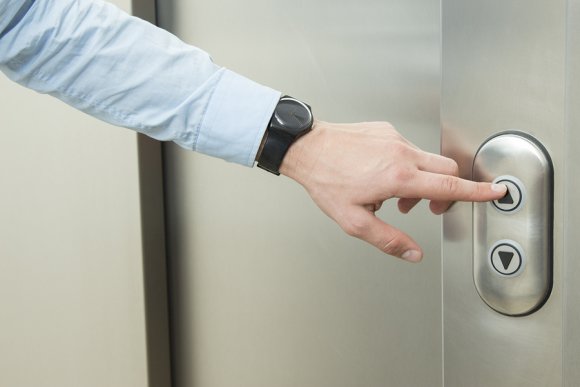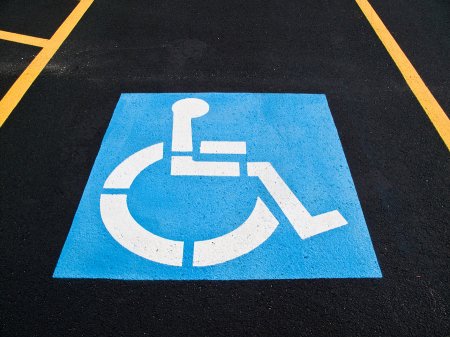-
Integrating Elevators into Your Hospital’s Wayfinding System in Salt Lake City, UT
Wayfinding is a major concern for every hospital. If you’re responsible for implementing wayfinding systems and improvements in your medical center, then you already understand the importance of easily overlooked details, like designations for elevator banks. Hospitals near Salt Lake City with multiple elevator banks need a way to differentiate them to help patients, staff, and visitors easily figure out how to get to their destinations. Ideally, your elevator bank designation system should be intuitive and universally understood. Consider making the elevator banks stand out on directories and maps with logos and color coordination.

Additionally, your hospital might use directory designations in a way that speaks to the patient population. One informative case study is that of a major children’s hospital in Seattle. The campus is separated into zones with child-friendly names like Mountain, Ocean, and Forest. Each zone features corresponding artwork. The elevator banks and similar features are given corresponding names to help visitors find their way. For instance, the Octopus elevator is located in the Ocean zone. This intuitive system allows for intuitive, easy navigation of a large hospital campus.
““
-
Can I Boost My Business with Elevator Advertising? (And Other FAQs) in Salt Lake City, UT
Savvy business owners and executives are always on the lookout for new marketing ideas. An effective marketing plan is one that involves multiple approaches, such as online ads, social media marketing, and of course, physical advertisements like billboards and signs. One oft-overlooked option is the wealth of advertising space available in elevators. Commercial elevators around the Salt Lake City area are prime real estate for ads that build brand awareness.

Can elevator advertising really work for my business?
Advertising in well-maintained, high-quality elevators can be an effective strategy for virtually any business. The occupants of elevators aren’t going anywhere for the duration of the ride. Essentially, you have a captive audience—and that audience is usually bored, and looking for something to do while they wait to reach their destination. Their eyes will naturally be drawn to any sort of advertisement, especially if it’s placed on the inside of the doors, as that’s the direction people usually face while they’re riding in an elevator.
What sort of ads would be most effective?
Any marketer would tell you that all of your ads should be geared toward your target audience, or a typical buyer profile. For example, if your usual customers are college students, then you’d probably stress the affordability and convenience of your products or services. For ads specifically intended to be placed in elevators, however, there’s another factor you should consider: entertainment value. Once the occupants leave the elevator and go about their business, they might forget about the ads they saw. You need to make your ads memorable, such as by making them entertaining or humorous.
Can I advertise in elevators of other businesses?
Elevators in your own office building are a great opportunity for free advertising, but you can also check around the area for elevator ad space to rent. Consider advertising in commercial buildings of non-competitor businesses. Ideally, you should target buildings with companies that complement your own. For instance, if you own a flower shop, you could advertise in the elevators of a funeral home or bridal shop.
““
-
An Etiquette Guide to the Corporate Elevator in Salt Lake City, UT
Everybody has somewhere to be, and if you’re in a rush in the morning, an elevator in Salt Lake City might be what gets you there. Accessible elevators are for everyone, however, and it’s each person’s individual responsibility to act appropriately during the ride. Watch this video for an etiquette guide to the corporate elevator.
An awkward elevator ride may seem harmless enough, but you can start your day on a more pleasant note by keeping things comfortable. First, don’t step onto the elevator until other passengers have had the chance to step off. Don’t stand too close to other passengers and encroach on their personal space, especially when the elevator is nowhere near capacity. If you are only going one floor up or down and there’s already a rush for the elevator, consider taking the stairs instead to free up some space for others.
““
-
Saving Money with Preventative Elevator Maintenance
When you spend a lot of money on a big investment, you might have one fearful question on your mind: What happens if it breaks? New elevators near Salt Lake City can work like a charm, but years of traffic will wear them down. If you don’t want to spend money on expensive repairs, take the time to maintain your elevator. Preventative maintenance keeps your elevator working properly throughout its entire life, and it gives you a chance to fix small problems before they get any bigger. Keep reading and save some money with preventative elevator maintenance .

Properly maintaining your elevator can save you more money than you think, and you don’t even have to do it yourself. Although it costs money to set up a maintenance plan with your local professionals, it’s a small price to pay for your peace of mind. Elevators that don’t receive maintenance will fail faster than those that do. As they fail they will require more and more repairs, and they may become dangerous. Preventative elevator maintenance reduces the need for these repairs, as well as the chances of sustaining an injury that might come with hospital bills.
““
-
Setting Residential Elevator Safety Rules for Your Kids
Your children might be excited at the idea of having an elevator in their Salt Lake City home. Though residential elevators are safe and easy to use, you still need to teach your kids how to be safe when they use it. This includes operating the doors safely, knowing when not to use the elevator, and remaining calm if the elevator stops between floors. Read on and set safety rules for the kids.

Be Careful with the Doors
Kids tend to play with things they’re not supposed to, like elevator doors. An adult can easily stop or hold the door if it’s closing, but a child isn’t as strong. Tell your kids to stay away from the doors when they enter the elevator so they don’t get their clothing or fingers caught.
Don’t Use the Elevator During Emergencies
As an adult, you know that it’s extremely dangerous to use an elevator during an emergency like a fire. Since an elevator is essentially a vehicle that controls itself, it’s not where you want to be when disaster strikes. There are usually signs in commercial buildings that warn you to take the stairs instead of the elevator if there’s a fire, and the same advice applies in the home. Even if you have three-four levels in your home, you should still take the stairs to avoid being trapped in an elevator during such a high stakes situation.
Know What to Do if It Stops
It’s helpful for anyone to know what to do if they’re riding in an elevator and it stops between floors, but it’s especially important for children. Kids might use their residential elevator without any supervision, but they also might panic if things go awry. Regularly test the alarm or emergency button to make sure it’s functional in case this happens. Remind your children that there is enough air to breathe in the elevator, it won’t fall, and they won’t be trapped in there forever.
““
-
Assessing Your Commercial Building for Accessibility
You want to give everyone an equal opportunity to shop at your store or benefit from your services, so everyone who wants to should be capable of getting inside the building. This means designating handicapped parking spots that are close to the storefront, as well as creating sidewalk ramps that make it possible for people in wheelchairs to get up to level ground. Commercial elevators in Salt Lake City are crucial in settings like department stores with several floors. Here’s what to think about when assessing your commercial building for accessibility .

Handicapped Parking
Reserved parking spots should be close to the building, and they should leave enough room to get out on either side of the vehicle. Be sure to enforce handicapped parking rules to ensure that no one is unnecessarily taking these spots for themselves. The space in front of a sidewalk ramp should be marked off to be kept clear, so people who use wheelchairs can access the ramp.
Sidewalk Ramps
There’s not much of a point in handicapped parking spots if a person can’t ultimately get inside the building. Sidewalk ramps allow people in wheelchairs to move from the parking lot to the inside of your store independently, and you should include them in your property design. If you put a parking spot right in front of a sidewalk ramp, it won’t be as easy to get to.
Accessibility Elevators
When it comes to the actual interior of the commercial building, think about how many floors you have. If there is any upstairs area, there should be a ramp or an elevator. An elevator is most convenient, and it’s an absolute necessity if there are a few levels to your building. Making your building more accessible opens you up to more sales and makes life easier for your customers.
““
-
The Vuelift Home Elevator by Savaria
Looking for a new elevator for your home in Salt Lake City? The Vuelift collection by Savaria is where discerning aesthetics meets uncompromising engineering. You can see the design possibilities for your new elevator when you watch this video.
It explores the placement choices for this high-quality elevator. Since the Vuelift home elevator is designed to maximize space, it can fit virtually anywhere. And since the clear glass offers a sleek, contemporary look, there’s no need to try to hide it. Place it in the foyer next to the stairwell, or place it near windows to take advantage of the panoramic views. The Vuelift is available in octagonal and round designs, both of which are code-compliant and energy-efficient.
““
-
What Healthcare Professionals Need to Know About Elevator Usage
Large medical centers can be confusing places, and it’s easy to get lost. To make matters more complicated, hospitals usually have different sets of elevator banks for different purposes. If you’re new to the healthcare profession, or you’ve recently joined the staff at a new hospital, there are a few things you should know about elevator usage. Remember that patient safety is always the top priority, so immediately alert the appropriate staff member if elevator repairs are needed at your Salt Lake City-area hospital.

Types of Hospital Elevators
Professional elevator installers may refer to the types of elevators as residential, commercial, or accessibility elevators. Hospitals will generally classify them according to their purpose, such as patient transport elevators, utility elevators, and public elevators. Some may have designated emergency patient transport elevators and designated staff elevators.
Purposes of Hospital Elevators
It’s essential to only use elevators for their intended purpose, even if that requires a little extra walking between elevator banks. This is because staff members or hospital visitors who inappropriately use patient transport elevators might prevent patients from being moved to treatment areas in a timely manner. This can be particularly serious in emergency cases, such as when a trauma patient arrives in critical condition and needs emergency surgery. In most hospitals, staff members who are not transporting patients will use public elevators, along with hospital visitors. Utility elevators are intended for transporting items, such as medical supplies, janitorial equipment, linens, and meals. By categorizing elevators according to their specific purposes, hospitals improve efficiency and patient care.
Rules of Etiquette for Elevators
It’s common knowledge that, while waiting for an elevator to arrive, it’s polite to stand back from the doors to give the occupants enough room to exit. It’s also polite to press the “open door” button while people are hurrying to catch the elevator. Some additional rules of etiquette apply when healthcare professionals are transporting patients. Push the stretcher or wheelchair into the elevator, and then carefully turn it around so that the patient faces the elevator door. And most importantly, healthcare providers should never discuss any aspect of a patient’s care when other passengers are in the elevator.
““
-
Why Elevator Maintenance Is Essential for ADA Compliance
The primary purpose of the Americans with Disabilities Act (ADA) of 1990 is to prohibit discrimination of individuals based on their disabilities. It’s intended to allow individuals with disabilities equal opportunities and rights as individuals without disabilities. Business owners should speak with a lawyer to find out which ADA requirements apply to them, and improve accessibility as needed by installing elevators in buildings in Salt Lake City. Elevator maintenance is another crucial issue that’s often overlooked, as elevator repairs must be made in order to maintain ADA compliance.

It’s to be expected that elevators will break down from time to time. When this happens, business owners must schedule elevator repairs right away. In the meantime, employees should be available to assist customers with disabilities who have accessibility problems. Business owners are expected to schedule routine elevator maintenance as recommended by the manufacturer, as repeated elevator breakdowns due to improper maintenance could be an ADA violation.
““
-
Essential Features of an Accessible Home
Millions of children and adults in the U.S. have disabilities, yet the idea of an accessible home is still considered revolutionary. Existing homes can be renovated to improve accessibility, although it’s ideal to design new construction projects with built-in accessibility features. For example, some contractors in Salt Lake City may install elevators in the homes they build. Residential elevators are beginning to be perceived as an essential feature, rather than a luxury option.

Floorplan
The ideal accessible home is one with an open floorplan. Thanks to the popularity of this design approach, many new construction homes today are built with an open floorplan. However, there are some pitfalls to be aware of, such as transitional elements. Since an open floorplan does not feature many room dividers, it may require more transitional pieces between different types of flooring materials. This can result in a slight elevation in the transition from carpet to tile floors, or from carpet to hardwood planks. These transitional areas should be designed carefully, so as not to create a tripping hazard or a wheelchair obstacle.
Elevator
Accessible homes are traditionally thought of as being one-story ranch houses, but not every family enjoys this design. Two-story and three-story homes can easily be made accessible with the addition of a new elevator. This allows family members and guests to enjoy the benefits of inclusivity. There are quite a few choices available, ranging from accessibility elevators designed especially for wheelchairs to beautiful glass elevators with panoramic views.
Clearance
Even if the home is built with an open floorplan, it will, of course, still have doorways. Doorways can be problematic for individuals who use wheelchairs, walkers, and even canes. An accessible home features enough clearance to enable a person using durable medical equipment to easily pass through. Clearance might not be an issue for people using canes, but it’s entirely possible that these individuals will need to transition to a walker or wheelchair at some point. Older homes can be renovated to provide a few more inches of horizontal clearance at each doorway.
““
RECENT POSTS
categories
- Uncategorized
- Home Elevator
- Carson Elevator
- Elevator Safety
- Accessibility Elevators
- Elevator Maintenance
- Hydraulic Elevators
- Dumbwaiter
- Dumbwaiter Installation
- residential elevator
- Roped Elevators
- commercial elevators
- Stair Lift
- Corporate Elevator
- Elevator
- Elevator Etiquette
- ADA Compliance
- new elevators
- luxury elevators
- Elevator Inspection
- Package Lifts
- Trus-T-Lifts
- Elevator Pulley Systems
Archives
2019
2018
2017
- December (3)
- November (4)
- October (5)
- September (2)
- August (3)
- July (5)
- June (1)
- May (4)
- April (1)
- March (4)
- February (1)
- January (3)
2016
- December (4)
- November (3)
- October (5)
- September (3)
- August (3)
- July (4)
- June (5)
- May (4)
- April (4)
- March (4)
- February (4)
- January (4)
